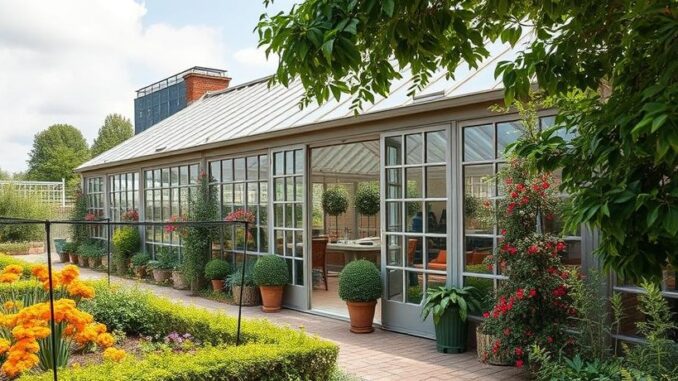
Summary
This article provides a step-by-step guide to enhancing your garden enjoyment with an orangery, covering key considerations from design and planning to construction and furnishing, ultimately transforming your outdoor space into a luxurious, year-round retreat.
Main Story
Orangeries, they’re not just greenhouses, are they? They offer a really unique way to merge your indoor and outdoor living spaces. Imagine a sun-drenched room, a true extension of your home, blurring that line between house and garden. You’re not just adding square footage; you’re enhancing your entire lifestyle.
So, let’s talk about planning one of these beauties. The first step, of course, is design. What do you actually want? Are we thinking a cozy reading space bathed in natural light? Or maybe, a lively area for entertaining guests with a view. On the other hand, I’ve even seen some people use them as amazing, bright kitchen extensions – the possibilities are pretty exciting, aren’t they?
Now, choosing the right features is crucial. For example, what kind of glass are we talking about? Double glazing for insulation? Or maybe something more elaborate that offers self-cleaning properties? And don’t forget the frame materials. Wood can look stunning, but it requires more maintenance, whereas aluminum is more durable, though, admittedly, less traditional. These decisions impact not only the aesthetic, but also the overall cost and longevity. It’s all about striking that balance, isn’t it?
When considering the furnishings, think about what kind of atmosphere you’re aiming for. For instance, are you going for a modern minimalist feel? Then, sleek, contemporary pieces might be your best bet. If you’re after something more rustic, opt for natural materials like rattan and wood. It’s all about creating a space that not only feels beautiful, but also functional. I remember a friend of mine, she tried to fit a massive sofa into her small orangery, and, honestly, it just looked a bit ridiculous. So, scale is absolutely something to keep in mind, you know?
And while we’re discussing scale, think about the transition between your indoor space and the orangery itself. Consider how the flooring blends and how the colors work together. You want it to feel seamless, like you’re naturally moving between two connected areas, rather than separate zones.
In short, an orangery can truly transform your property and your day-to-day. It’s not just a building project; it’s an investment in your lifestyle. You’ll be able to enjoy the outdoors all year round, even when the rain is lashing down outside and the wind, sounds like a banshee. It’s that little piece of nature, in your home. So, what are you waiting for?


Be the first to comment